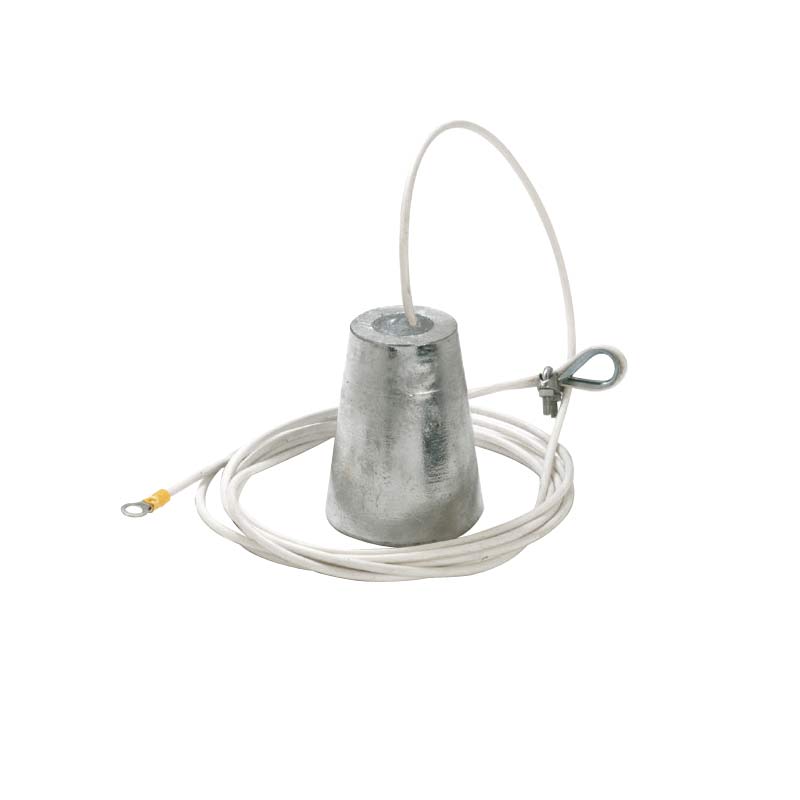Tecnoseal
TECHNOSEAL Hanging Anode - 2.5KG
TECHNOSEAL Hanging Anode - 2.5KG
Couldn't load pickup availability
TECHNOSEAL Hanging Anode - 2.5KG
Weight : 2.5KG
What Is a Hanging Anode?
A hanging anode is an anode that is suspended or hung in the water, often on the side or bottom of a structure like a boat, pier, or dock. It is usually connected to the metal part it’s protecting via a wire or bracket. The primary function is to prevent corrosion of submerged metal surfaces by sacrificing itself and corroding in place of the more valuable metal.
How Does It Work?
-
Sacrificial Protection: Hanging anodes are made from materials such as zinc, aluminum, or magnesium, which are more reactive than the metals used in your boat or structure (like steel, copper, or bronze). When the hanging anode is in contact with water, the less noble (more reactive) anode material corrodes in place of the metal you’re protecting.
-
Electrical Current Flow: The hanging anode creates an electrical current between the anode and the metal part it is protecting. This flow helps prevent the metal structure from being attacked by the corrosive effects of electrolytes (in this case, seawater).
-
Placement and Size: The position of the hanging anode matters because it needs to be placed in a way that ensures optimal protection of the metal structures around it. These anodes are usually positioned in areas that are prone to high levels of exposure to saltwater, like the lower parts of a boat or dock.
Advantages of Hanging Anodes:
-
Effective for Submerged Areas: They are commonly used for structures or boats that can’t have anodes directly mounted to them, making them perfect for piers, docks, or ships with large hulls where direct attachment may not be feasible.
-
Easily Replaceable: Since they are suspended and not permanently mounted, hanging anodes are easy to replace when they’ve worn down, which is critical for maintaining effective protection.
-
Convenient for Maintenance: Hanging anodes can be inspected and replaced without needing to perform more complex or invasive procedures. This makes them more convenient for regular maintenance.
Use Cases:
-
Boats and Ships: Hanging anodes are frequently used on the hulls of ships or boats, particularly for larger vessels where direct attachment to the hull might not be ideal.
-
Docks and Piers: Hanging anodes are often used to protect metal pier structures or docks from saltwater corrosion, ensuring the longevity of the equipment in harsh marine environments.
-
Underwater Pipelines and Cables: They can be used in underwater infrastructure, where sacrificial anodes help prevent corrosion along pipelines, cables, or other submerged metal systems.
Materials Used:
- Zinc Anodes: Common in saltwater environments, affordable and widely used for marine applications.
- Aluminum Anodes: Often preferred in brackish water or environments with higher salinity, as aluminum offers a longer lifespan compared to zinc.
- Magnesium Anodes: Best for freshwater environments, where magnesium provides efficient protection against corrosion.
When Should You Replace a Hanging Anode?
A hanging anode needs to be replaced when it has corroded enough to no longer provide effective protection. The sacrificial material will slowly dissolve over time, so it’s essential to inspect the anode periodically (typically once a year) to ensure it’s still doing its job. If the anode is more than halfway corroded, it should be replaced to avoid corrosion damage to your protected metal surfaces.
Share


